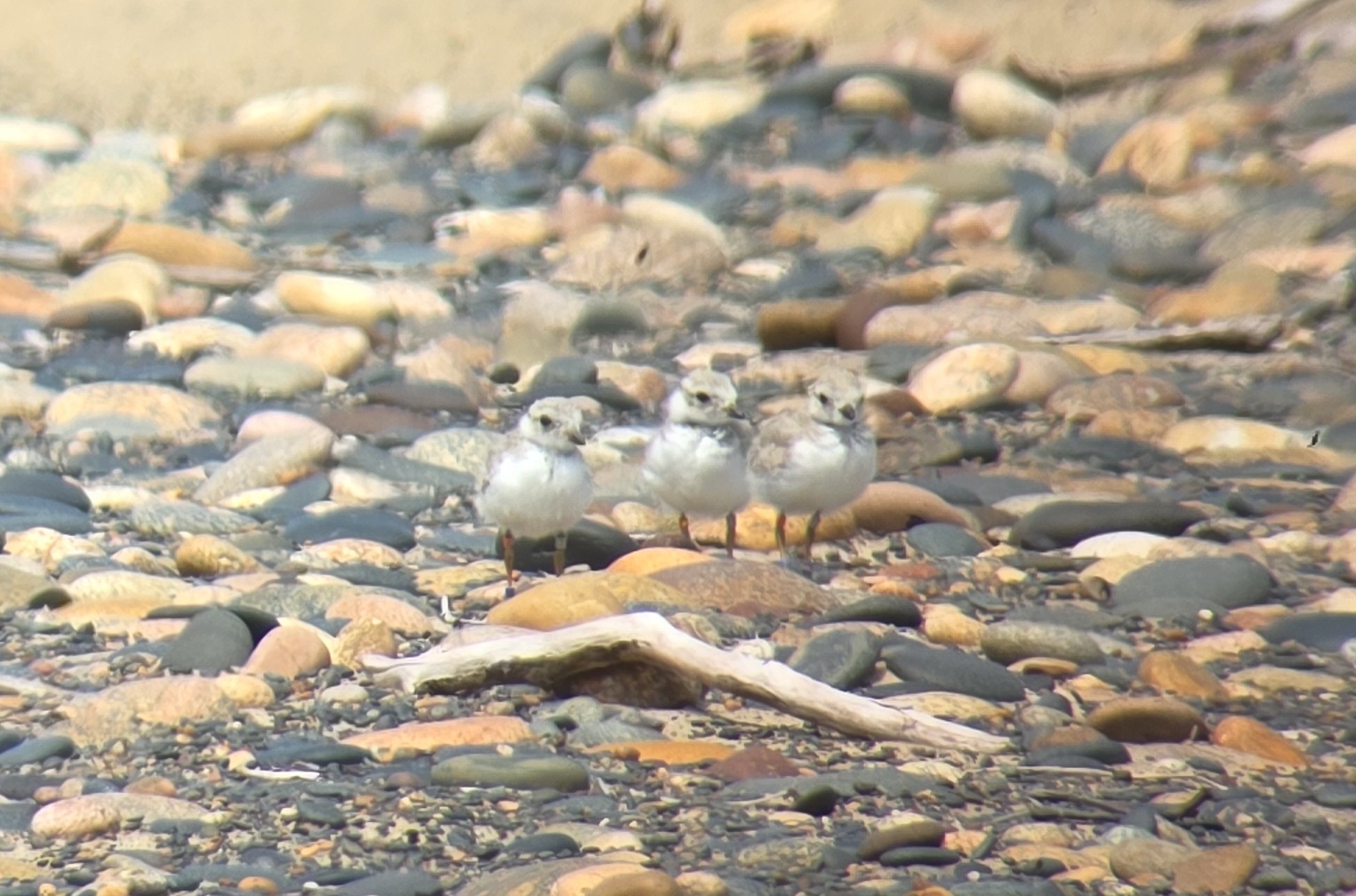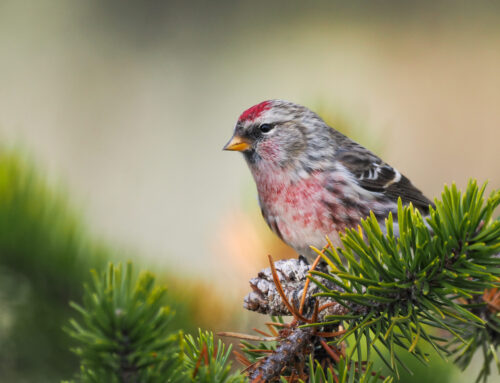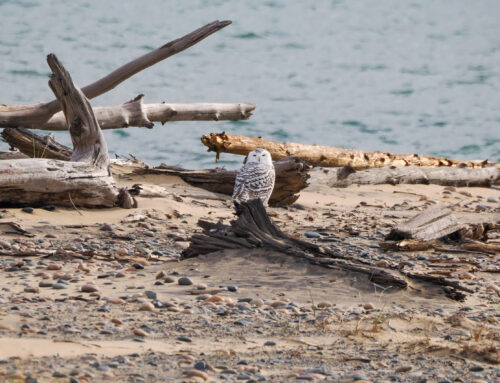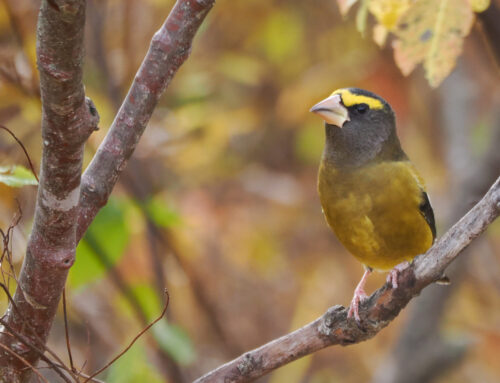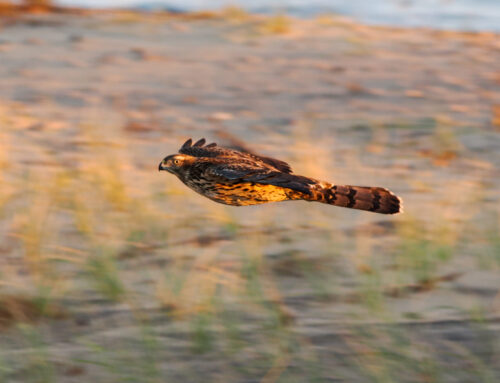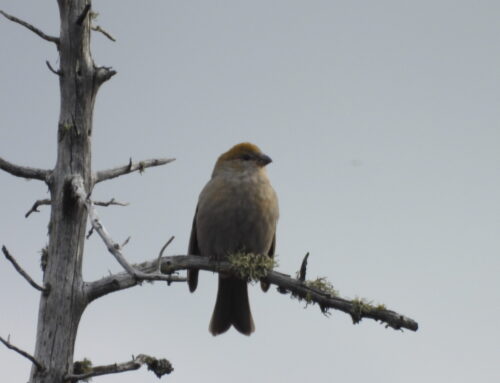Whitefish Point
Vie and her three chicks remain strong. While their official fledge date has come and gone, they aren’t flying just yet, but are so close. Each day, their feathers grow and become more distinct, making their little jump flights increase in air time.
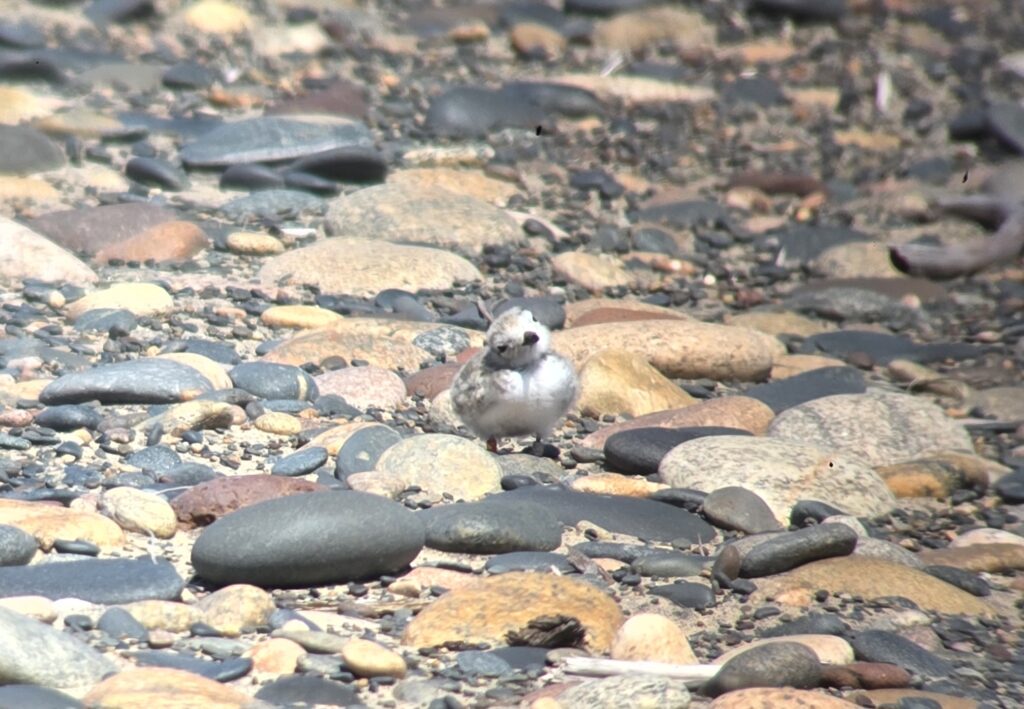
PIPL Chick Yellow Dot sits in the sand. Photo by Stephanie Owens
Hot Shot continues to harass the family, but Vie has no trouble defending herself and her young. It’s a bit ironic in a way, as his chances of wooing her next year have increased since the loss of Little Bill Bob.
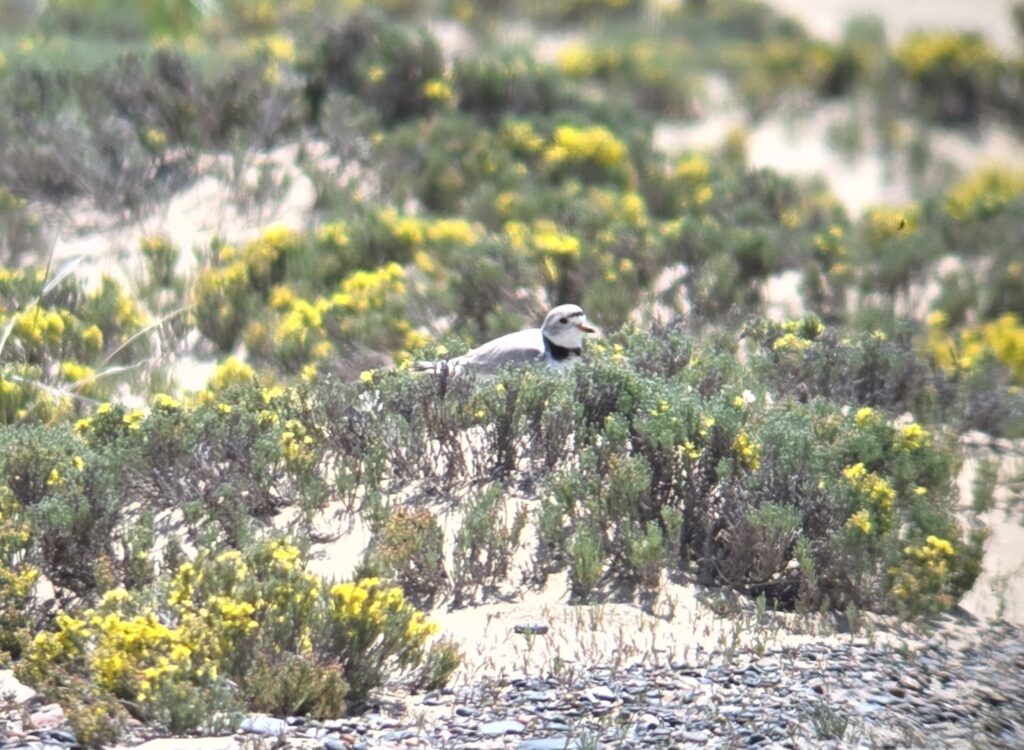
PIPL Vie watches over her chicks in the grass. Photo by Stephanie Owens
On Wednesday, July 16, I had a bit of a scare. I walked the beach that morning in search of Vie and the chicks. I stopped briefly in front of the boardwalk to view some commotion between Vie and a few single plovers, without the chicks in sight. Suddenly, a Great Blue Heron flew onto the shore directly in front of me. The plovers scattered, and I quickly located my phone to take a photo. Blue Herons are my favorite bird, and I always feel blessed when they grace me with their presence. After a minute of lining up my spotting scope just right for a clear picture, two more Herons descended from the sky and landed in the Eastern portion of the closed plover area. The Heron in front of me took off and joined the others, leaving me to watch from afar and speculate whether Vie’s chicks were there, crouching in the dunes. While Herons generally consume fish, they may eat small birds if the opportunity arises. There I stood, watching these magnificent creatures potentially ruin my summer. After about ten minutes of slowly stalking through the grass, the birds took off towards the tree line. I picked up my walk East in search of the chicks, as our volunteer viewed them a little further down. I was pleased to hear Vie’s chirp after a quarter mile and discovered that all the chicks were safe. I feel more comfortable with them down here, too, away from the congestion of beach goers.
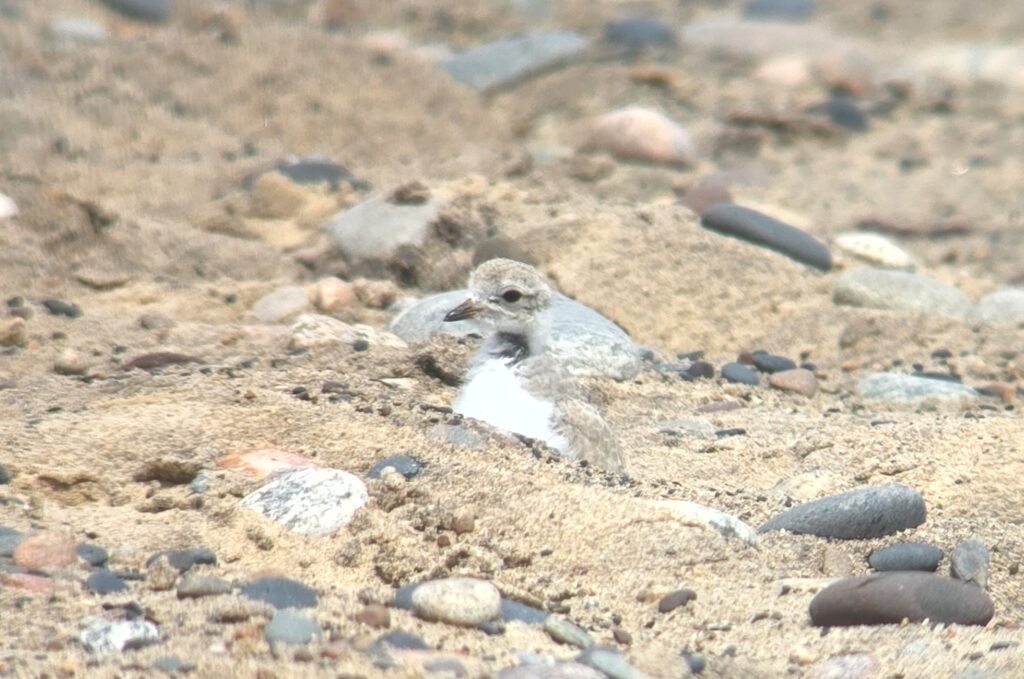
PIPL Chick rests in the sand. Photo by Stephanie Owens
Each day, I see Lovely somewhere near the boardwalk, but I haven’t seen Logger since the 11th. I’m not alarmed though, as sometimes plovers will disappear for some time before showing up again. I hold hope that she’s still here, exploring her territory for next year.
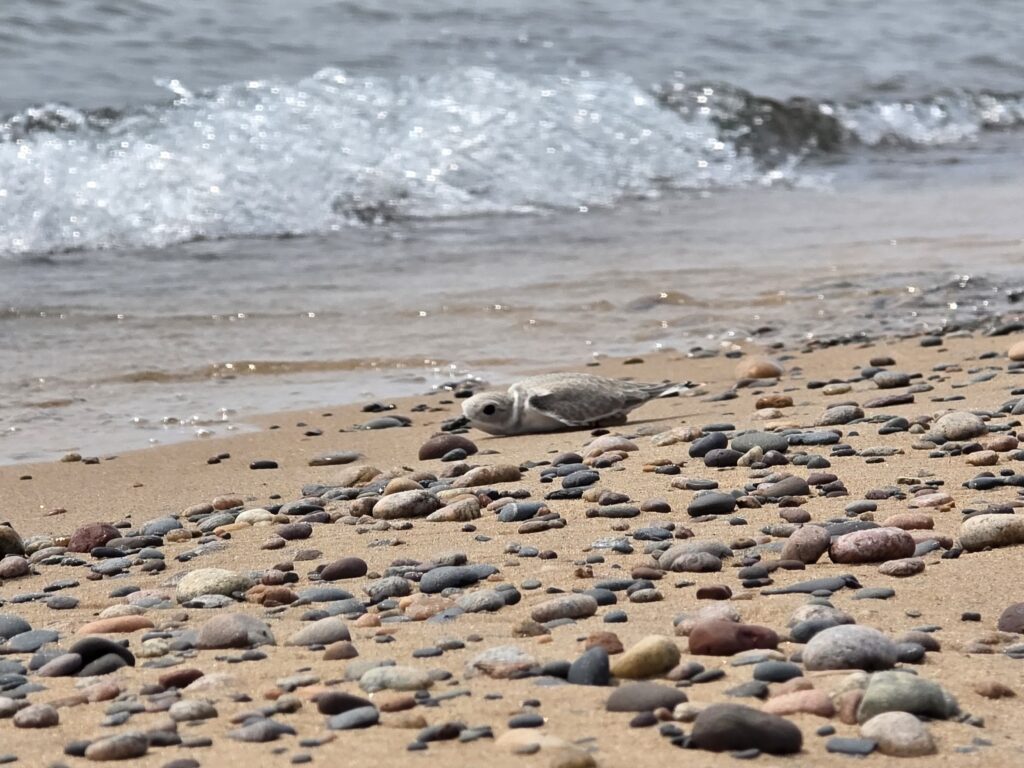
PIPL Logger lowers into the sand as a Gull flies overhead. Photo by Stephanie Owens
~ Stephanie Owens, 2025 Piping Plover Monitor
Featured Photo: WPBO’s three PIPL Chicks practice their boy band pose | Stephanie Owens
Piping Plover monitoring is a collaborative effort between Michigan Audubon and Seney National Wildlife Refuge (USFWS).
You can keep up with the 2025 Piping Plover action at WPBO by reading Stephanie’s blog posts and following WPBO’s social media (Facebook, Instagram, and X).
Stephanie Owens: 2025 Piping Plover Monitor
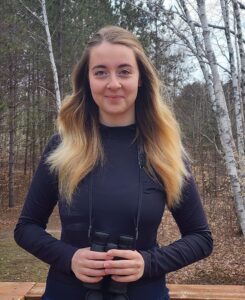 Having grown up in the Upper Peninsula of Michigan, an appreciation of the outdoors seemed inevitable for Stephanie. Walks in the woods with her father and high school science courses helped her identify this passion. In 2024, she earned a Bachelor of Science in Conservation Biology from Lake Superior State University, where she completed her senior thesis on the distribution of per- and polyfluoroalkyl substances in Eastern Upper Peninsula waterways. Now, with three seasons of PIPL monitoring under her belt, she looks forward to another summer with the U.P. plovers and returning to WPBO after a successful ’24 season. After the end of last season, Stephanie began her work at Eva Burrell Animal Shelter as a canine caretaker, fostering hope and love for all animals there.
Having grown up in the Upper Peninsula of Michigan, an appreciation of the outdoors seemed inevitable for Stephanie. Walks in the woods with her father and high school science courses helped her identify this passion. In 2024, she earned a Bachelor of Science in Conservation Biology from Lake Superior State University, where she completed her senior thesis on the distribution of per- and polyfluoroalkyl substances in Eastern Upper Peninsula waterways. Now, with three seasons of PIPL monitoring under her belt, she looks forward to another summer with the U.P. plovers and returning to WPBO after a successful ’24 season. After the end of last season, Stephanie began her work at Eva Burrell Animal Shelter as a canine caretaker, fostering hope and love for all animals there.

